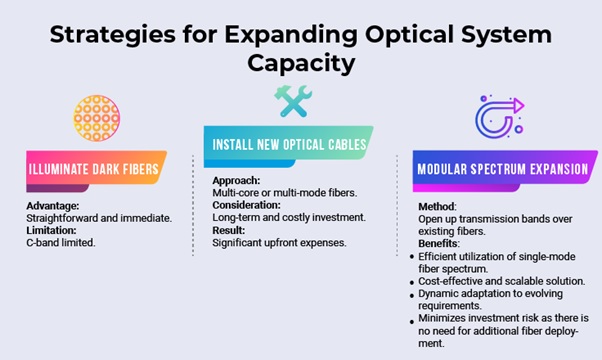You wake up, turn on the lights, take a shower, make breakfast using your gas stove, and head out to work or school. Everything seems pretty normal, right? But have you ever thought about what makes all of these things possible? That's where critical infrastructure comes into play. It's like the backbone of our modern society, the stuff that keeps everything running smoothly behind the scenes. So, what exactly is critical infrastructure? Well, it includes a bunch of different things that are super important for our everyday lives. We are talking about things like power grids that keep our lights on, water systems that bring clean water to our homes, transportation networks like roads and bridges that help us get around, and communication systems like the internet and phone lines that keep us connected.
In an era where critical infrastructure, including energy, transportation, and communication systems, plays a pivotal role in the functioning of societies, ensuring the security and reliability of networks is paramount. Among the various technologies available, fiber optics stands out as a cornerstone for robust, high-speed, and secure communication. This blog explores the significance of fiber optic networks in critical infrastructure, the challenges they face, and the strategies employed to enhance their security and reliability.
Importance of Fiber Optic Networks in Critical Infrastructure
Fiber optic networks have become the backbone of modern communication systems due to their numerous advantages over traditional copper-based systems. These advantages include:
-
1. High Bandwidth
Fiber optics offer significantly higher bandwidth compared to copper cables, allowing for faster data transmission and accommodating the increasing demands of critical infrastructure applications.
-
2. Low Latency
Fiber optics exhibit lower latency, making them ideal for real-time applications such as video surveillance, industrial control systems, and financial transactions.
-
3. Security
Fiber optic signals are difficult to intercept, offering enhanced security compared to electromagnetic signals transmitted over copper wires, which are susceptible to electromagnetic interference (EMI) and radio frequency interference (RFI).
-
4. Reliability
Fiber optics are immune to environmental factors like moisture, temperature fluctuations, and electromagnetic interference, ensuring reliable communication even in harsh conditions.
Given these advantages, fiber optic networks play a crucial role in maintaining the operational efficiency and resilience of critical infrastructure components.

Challenges Faced by Fiber Optic Networks
Despite their strengths, fiber optic networks encounter several challenges when deployed in critical infrastructure settings:
-
1. Physical Security
Protecting fiber optic cables from physical tampering, such as cuts or vandalism, is essential to prevent service disruptions and data breaches.
-
2. Cybersecurity Threats
Fiber optic networks are not immune to cyber threats, including hacking, data breaches, and denial-of-service (DoS) attacks, which can compromise the integrity and confidentiality of sensitive information.
-
3. Maintenance and Monitoring
Regular maintenance and monitoring are required to detect and address issues such as fiber degradation, signal loss, and network congestion, which can impact performance and reliability.
-
4. Regulatory and Environmental Challenges
Securing the required permits and approvals can be a lengthy process, potentially leading to deployment delays and higher expenses. Furthermore, in outdoor settings, fiber optic cables are susceptible to damage from natural disasters like earthquakes, floods, and landslides, which can result in widespread service disruptions.

Strategies for Enhancing Security and Reliability of Fiber Optic Networks:
To mitigate these challenges and ensure the security and reliability of fiber optic networks in critical infrastructure, various strategies and best practices can be implemented:
-
1. Physical Security Measures
- Deploy hardened enclosures, tamper-proof cabinets, and secure cable routing to protect fiber optic cables from physical damage and unauthorized access.
- Implementing surveillance systems, access control mechanisms, and perimeter fencing to deter intruders and enhance physical security around critical infrastructure sites. -
2. Encryption and Authentication
- Encrypting data transmitted over fiber optic networks using strong cryptographic algorithms to prevent unauthorized interception and eavesdropping.
- Implementing robust authentication protocols, such as mutual authentication and digital certificates, to verify the identity of network devices and users. -
3. Cybersecurity Solutions
- Deploying firewalls, intrusion detection/prevention systems (IDS/IPS), and network segmentation to detect and mitigate cyber threats targeting fiber optic networks.
- Conducting regular vulnerability assessments, penetration testing, and security audits to identify and remediate security gaps in network infrastructure. -
4. Redundancy and Resilience
- Implementing redundant fiber paths, diverse routing protocols, and failover mechanisms to ensure continuous connectivity and minimize downtime during network failures or outages.
- Establishing disaster recovery plans, backup systems, and redundant power supplies to maintain critical services and data availability in case of emergencies or disruptions. -
5. Proactive Monitoring and Maintenance
- Utilizing network management tools, performance monitoring software, and predictive analytics to proactively identify and address potential issues in fiber optic networks.
- Conduct regular inspections, fiber optic testing, and preventive maintenance activities to optimize network performance, minimize signal degradation, and extend equipment lifespan. -
6. Training and Awareness
- Providing comprehensive training programs and cybersecurity awareness sessions for network operators, maintenance personnel, and other stakeholders involved in managing fiber optic infrastructure.
- Promoting a culture of security, compliance, and incident response readiness to enhance the overall resilience of critical infrastructure networks against evolving threats.
Conclusion
In conclusion, fiber optic networks play a pivotal role in supporting and safeguarding critical infrastructure operations, offering high bandwidth, low latency, and enhanced security features. However, ensuring the security and reliability of these networks requires a multi-faceted approach encompassing physical security measures, cybersecurity solutions, redundancy strategies, proactive monitoring, and personnel training. By adopting the suggested strategies and best practices, organizations can strengthen the resilience of fiber optic networks and mitigate potential risks, thereby safeguarding critical infrastructure assets and maintaining uninterrupted services for society at large.